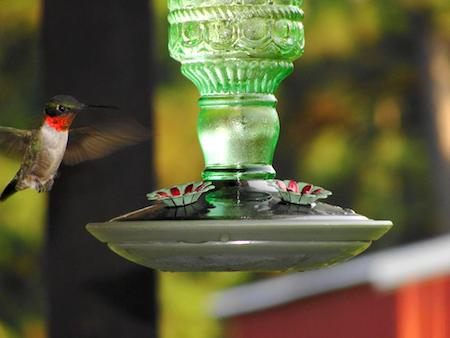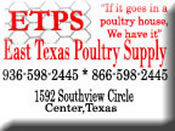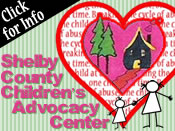
A ruby-throated hummingbird visits a backyard feeder.
April 12, 2023 - Like clockwork each spring, the ruby-throated hummingbirds arrive when the native red buckeyes and coral honeysuckle bloom. I owe my first experiences with hummingbirds to the late Marie Daly of Longview. She not only kept food and water out for all birds, but also sported the first martin house, bluebird nest boxes, and hummingbird feeders I had ever seen.
Mrs. Daly was particularly fond of her precious hummingbirds. She had three feeders hanging from the eves that she had to refill each day. While I mowed “the back forty” as they called it, the back of the house appeared to be shrouded in buzzing birds. I had never seen so many hummingbirds in one place. Mrs. Daly was as tough as she was nice and would drag her step stool from feeder to feeder so she could snip the wasps in half that were lapping up her birds’ nectar. She was a giver and graciously gifted me my first hummingbird feeder.
Mrs. Daly’s love of hummingbirds didn’t end with artificial feeders. She also kept a yard full of flowers for them including my first Turk’s cap and Mexican petunias. The constant sulfur butterflies and semi-edible fruit first captured my attention before I noticed that the steady stream of hummingbirds claimed them as their favorite. It was then that I was officially hooked on both hummingbirds and Turk’s cap.
The hummingbirds in Marie Daly’s landscape were ruby-throated hummingbirds. They are the most common hummingbird in the Eastern United States. Like all hummingbird species, the ruby-throat is only here during the growing season, returning to Central America for the cold winter months and returning each spring when the native wildflowers start to bloom.
Anyone can fashion their home landscape into a hummingbird oasis by providing the same three essentials that all birds need--food, shelter, and water. We are all familiar with hummingbird feeders filled with sugar water at a ratio of 1 part refined sugar boiled in 4 parts water (red dye isn’t recommended). But it’s even more satisfying to create a natural hummingbird paradise using their favorite nectar plants. These include all salvias, Turk’s cap, pentas, cigar plant, columbine, hibiscus, firebush, firecracker plant, coral bean, red yucca, cardinal flower, Indian pink, standing cypress, red buckeye, cypress vine, crossvine, trumpet creeper, and coral honeysuckle. One can never go wrong with red flowers, especially tubular shaped ones, but blue and purple salvias do the trick as well.
They also need sources of protein including many tiny insects such as aphids. Spiders are especially important to hummingbirds as they provide both food for the birds and material to construct their nests which are made from bits of lichen from old trees bound with spider web.
For more information on hummingbirds in Texas see my friend Cliff Shackelford’s book, Hummingbirds of Texas (2009, Texas A&M Press).
Greg Grant is the Smith County horticulturist for the Texas A&M AgriLife Extension Service. He is the author of Texas Fruit and Vegetable Gardening, Heirloom Gardening in the South, and The Rose Rustlers. You can read his “Greg’s Ramblings” blog at arborgate.com, read his “In Greg’s Garden” in each issue of Texas Gardener magazine (texasgardener.com), and follow him on Facebook at “Greg Grant Gardens.” More science-based lawn and gardening information from the Texas A&M AgriLife Extension Service can be found at aggieturf.tamu.edu and aggie-horticulture.tamu.edu.








